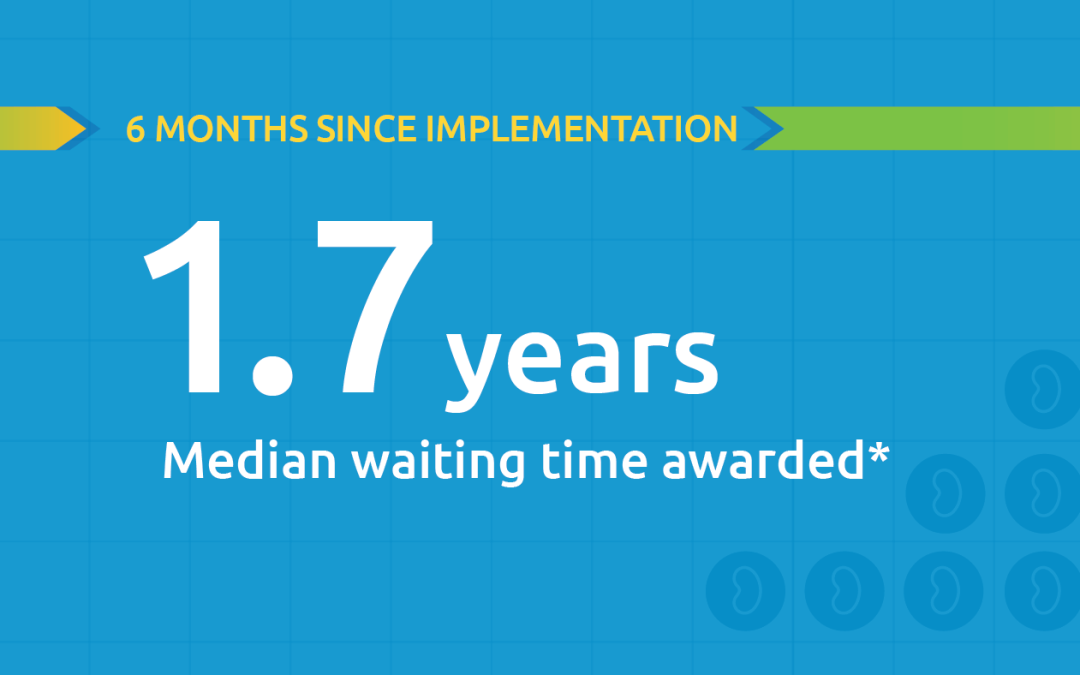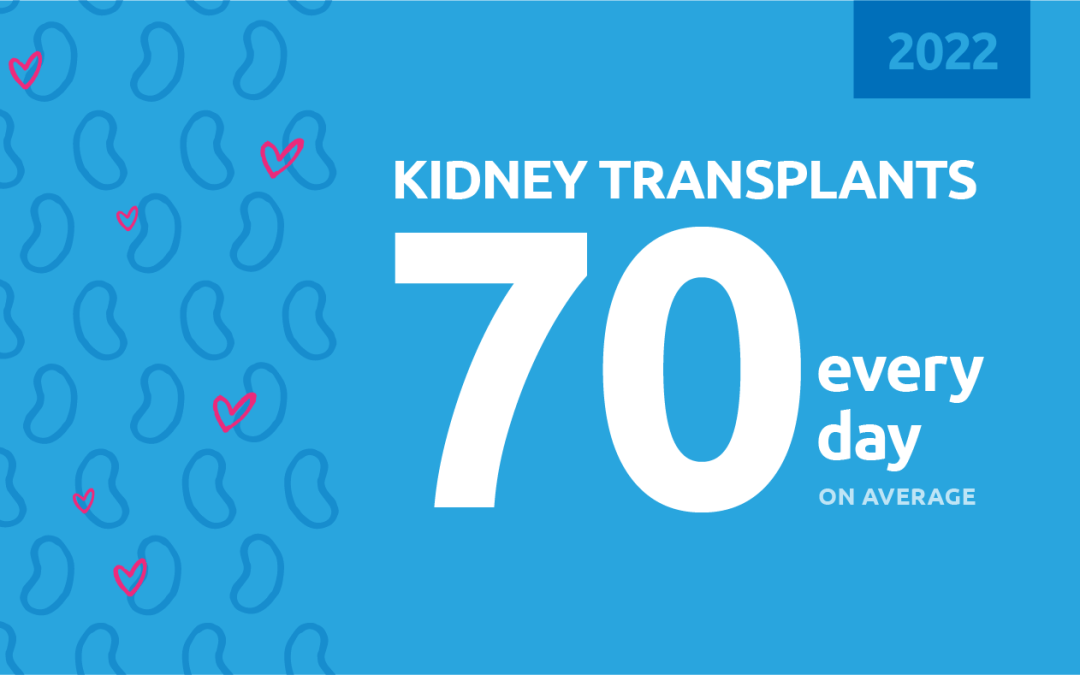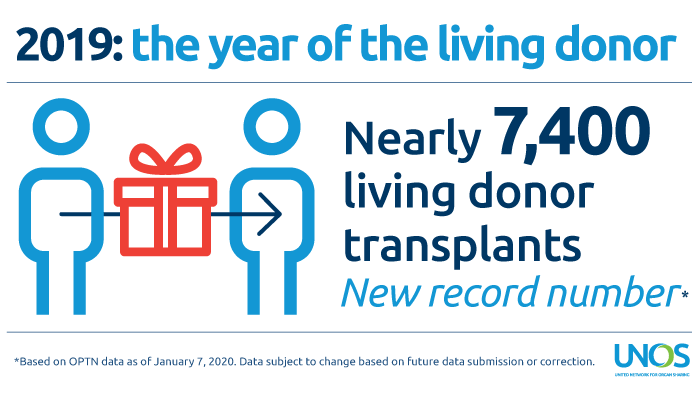in focus
2019 was a record-setting year for living donation, with 7,397 living donor organ donations performed across the country — far exceeding the 2004 record of 6,992, and increasing the nationwide rate by 5.8 percent.

Across the country, living donor organ transplants are on the rise — with no sign of slowing down.
One living donor liver transplant program increased their volume by more than 600 percent in just two years.
Transplant teams across the country are taking deliberate steps to make the living donation procedure available to more people through creative strategies such as:
- Crowdsourcing living donors.
- Using online portals to streamline the donor identification and evaluation process.
- Educating the next generation of organ donation and transplantation professionals.
As these transplant teams across the country expand the donor pool in their regions, they are setting a precedent that they hope other programs will follow.
How else is the donation and transplant community working together to increase living donation? Read more about what members are doing to save more lives.
Want to learn more about living donation? Get started here.
In focus

A decade of record increases in liver transplant
10,660 liver transplants, the most ever in a year.

Black kidney candidates are receiving waiting time modifications, helping them get the organs they need
Latest kidney monitoring report shows two new kidney polices are working as intended

Research in focus: examining organ offers
Three recent studies from UNOS researchers examine offer acceptance practices and impact of Offer Filters tool.

New milestone reached in kidney donation and transplant
For the first time, more than 25,000 kidney transplants were performed in a single year

